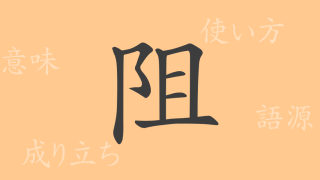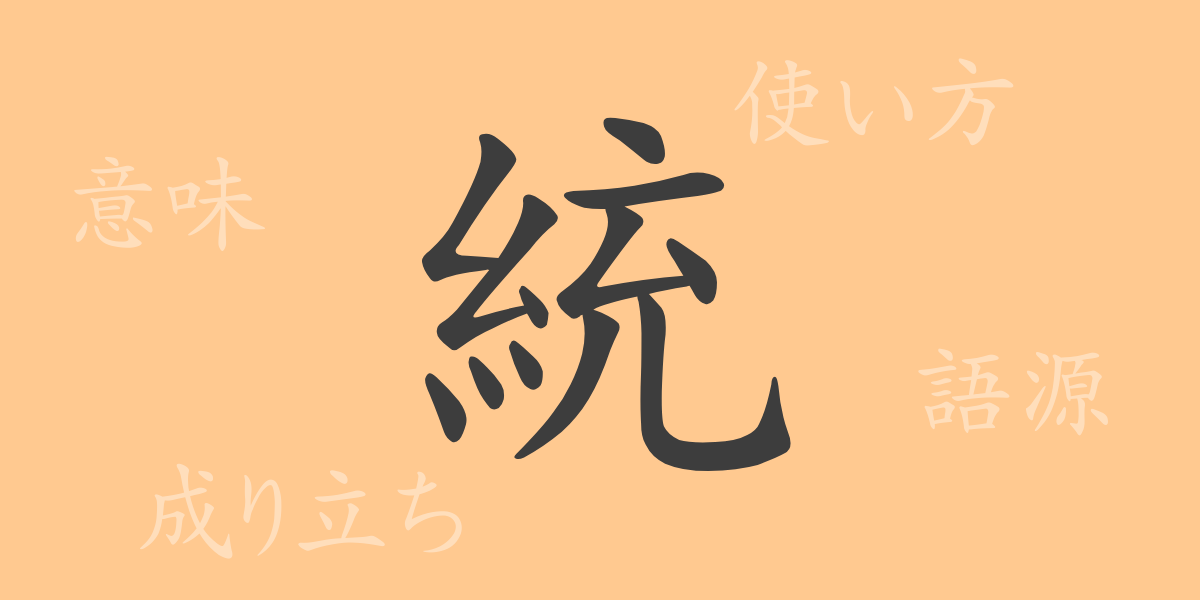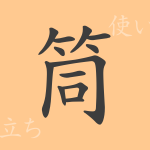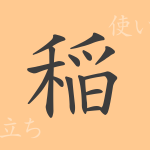In the Japanese language, each Kanji character carries deep meaning and forms a crucial part of the rich tapestry of expressions. ‘統 (とう)’ is one such Kanji that seamlessly integrates into our everyday lives. This article delves into the origins, meanings, and uses of the Kanji ‘統’, exploring how it is utilized in our language, and touches upon idioms, phrases, and proverbs that involve this character. Join us on a journey to discover the allure of ‘統’ as a commonly used Kanji in Japan.
Origins of ‘統 (とう)’
The Kanji ‘統’ originated from ancient China, traceable back to oracle bone scripts. It combines the pictographs of ‘糸’ (silk thread) and ‘廾’ (hands), originally depicting hands gathering threads, symbolizing the act of ‘gathering’ or ‘uniting.’ Over time, ‘統’ evolved from physically tying things together to represent abstract concepts such as ‘to govern’ or ‘to manage.’
Meaning and Usage of ‘統 (とう)’
‘統’ primarily conveys meanings like ‘to govern’, ‘to control’, or ‘to manage’. It is used to describe the consolidation of organizations, groups, or nations under a single leadership or management. In political contexts, it’s used in terms such as ‘to govern a country’, and in business, phrases like ‘to oversee a project’ are common. Additionally, it appears in words like statistics and control, where it pertains to organizing and maintaining standards over data or regulations.
Readings, Stroke Count, and Radical of ‘統 (とう)’
Let’s examine the readings, stroke count, and radical of the Kanji ‘統’.
- Readings: On’yomi ‘トウ’, Kun’yomi ‘す.べる’, ‘ほび.る’
- Stroke Count: ‘統’ consists of 12 strokes.
- Radical: The radical of ‘統’ is ‘糸’ (silk thread).
Phrases, Idioms, and Proverbs Using ‘統 (とう)’
There are numerous phrases, idioms, and proverbs that include ‘統’, each reflecting its fundamental meanings of ‘unifying’ or ‘governing’.
- 統一 (とういつ) – The act of unifying or consolidating disparate elements into one.
- 統率 (とうそつ) – Leading or commanding a group effectively.
- 統治 (とうち) – Governing or ruling a country or region.
- 統計 (とうけい) – The collection, organization, and analysis of numerical data.
- 統制 (とうせい) – Imposing regulations to maintain order and control.
Each of these terms demonstrates the underlying meanings of ‘統’ as to organize or govern.
Conclusion on ‘統 (とう)’
The Kanji ‘統’ has evolved from its pictographic origins to a broad application across various contexts. From organizing groups to governing territories and managing data, ‘統’ plays an indispensable role in our lives. Understanding the implications and applications of ‘統’ not only deepens our grasp of the Japanese language but also enriches our expression capabilities. The strength of ‘統’ and our flexibility in using it expand the world of linguistic possibilities.

























